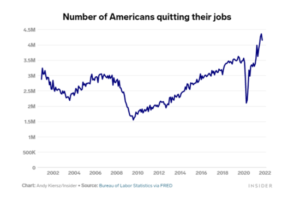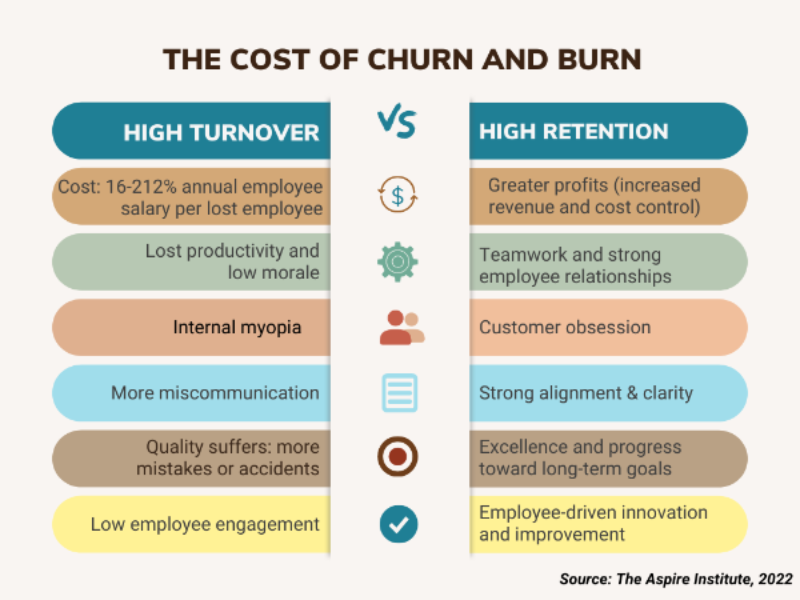English punk rock band The Clash got that exactly right back in 1981 – hitting on the dilemma facing an estimated 39% to 52% of U.S. workers who are keen to make a job or industry change in 2022.
According to one study from Fidelity Investments, that’s four in 10 looking to make a job switch this year. The 2022 Financial Resolutions Study found that 39% of employed respondents across all age categories are planning to get a new gig in 2022. Reasons for seeking a change were values-based, with stress levels, flexibility, and “finding a job that better aligns with my personal values” cited as top reasons.
Staying versus going remains a big theme in 2022 with The Great Shift – the movement of U.S. workers going after more purpose, meaning, flexibility, and greater rewards in their jobs. “It’s quittin’ time in America,” declared Business Insider this month. For real, over 38 million workers quit, leaving big paying jobs for greater life-work balance or low-wage industries for greener pastures.
2021 labor market data fully backs that up. For seven months straight – April to December 2021 – record levels of employees quit each month with a peak of 4.5 million jumping ship in December 2021.

Are your key people quitting? Are you doing everything possible to retain your best and brightest talent? Is your staffing plan focused more on employee retention than new hiring? It should.
Construction Must Change, Too
Skilled construction tradespeople are not leaving in the droves we see in retail, entertainment, travel, leisure, hospitality, and food services. However, much can be learned about changing employee expectations overall.
For example, construction employment also declined in late 2021, with 410,000 open positions in the U.S. in October 2021. That’s compared to 253,000 in the same month of 2020.
Quitting is not new to home construction. But it has taken on a new flavor in our post-vaccine economy. Construction industry turnover rates are twice as high as the average business – a whopping 25% yearly. Healthy turnover is considered to be more like 10%. Some companies had very low 1-2% exit rates before the 2020 pandemic recession.
Data from the Bureau of Labor Statistics show how the post-vaccine economy is still being reshaped by workers. Simply put, the old way of working must change for people to stay in their roles. Good news? Pay is not the primary driver of resignations. Purpose, lifestyle, and healthy work environments are – and they are also motivators within your control.
Rather than hiring, shift your focus to growing the team you have. Aim for “best place to work” status by acting on at least one of these six ideas.
6 Simple Ways to Keep Your People
|
1. Stay Interviews |
|
| 2. Flexible and Part-Time Work Schedules
|
|
| 3. Career Growth |
|
| 4. Tech Automation & Innovation Budget |
|
| 5. Care and Appreciation |
|
| 6. Better Benefits |
|
Put Your Attention on Retention
Simply put, it’s better to invest your money, time, and energy to keep the crew you have—more impactful and less costly. Doubling down on employee engagement pays off big time versus new hiring in a tight labor market.

Plus, nailing your staffing strategy is so key to profitability that Jim Eskridge, Aspire Business Coach says: “It must be a long-term, predictable, proactive process.”
He adds, “We coach our Aspire clients to be always cultivating, looking, and nurturing talent 6-12 months out to avoid panic hiring or scrambling if somebody leaves.”
Of course, the faster you increase your profitability (keeping more of the money earned), the more financial flexibility to bump up wages, promotions, and benefits. That might mean staffing a slightly smaller team, but one that reaps greater rewards for your profitable business.
Plus, it’s a big, costly mistake to hire before you fix your margins. So, while you’re fixing those margins, be sure to retain critical people.
Small Hinges Swing Big Doors
Take one small retention step from the list above. Remember, small hinges swing big doors! Aspire is not an HR firm, but our Business Coaches do help contractors achieve next-level profitability so that you can afford to hire, retain and reward your team.
When it comes to staying or going, it really does hinge on that.
